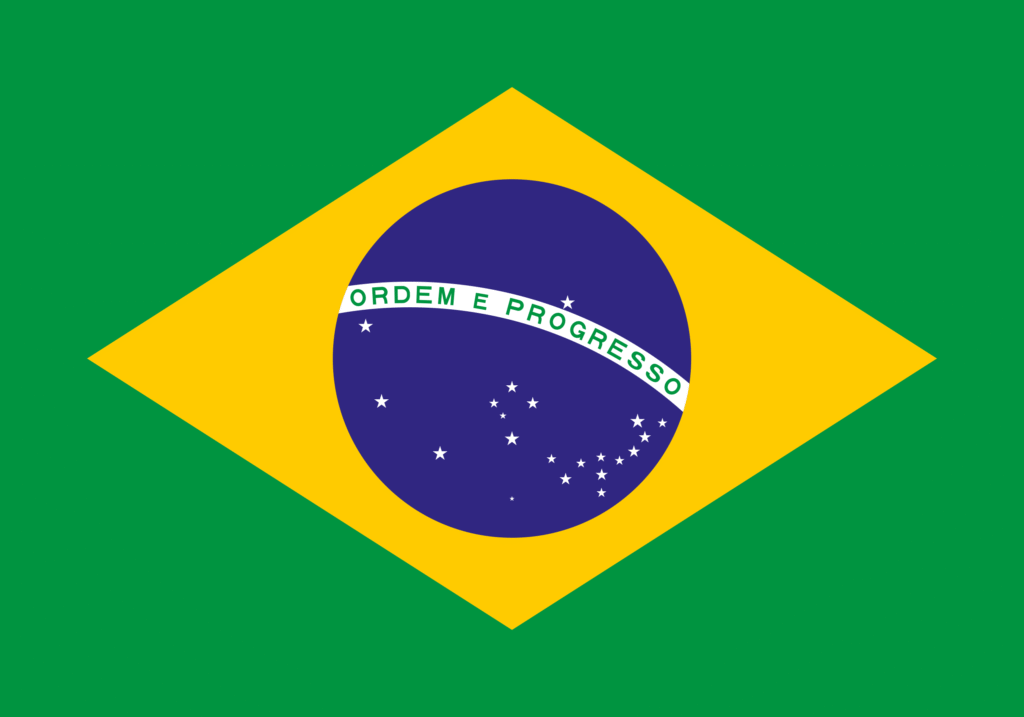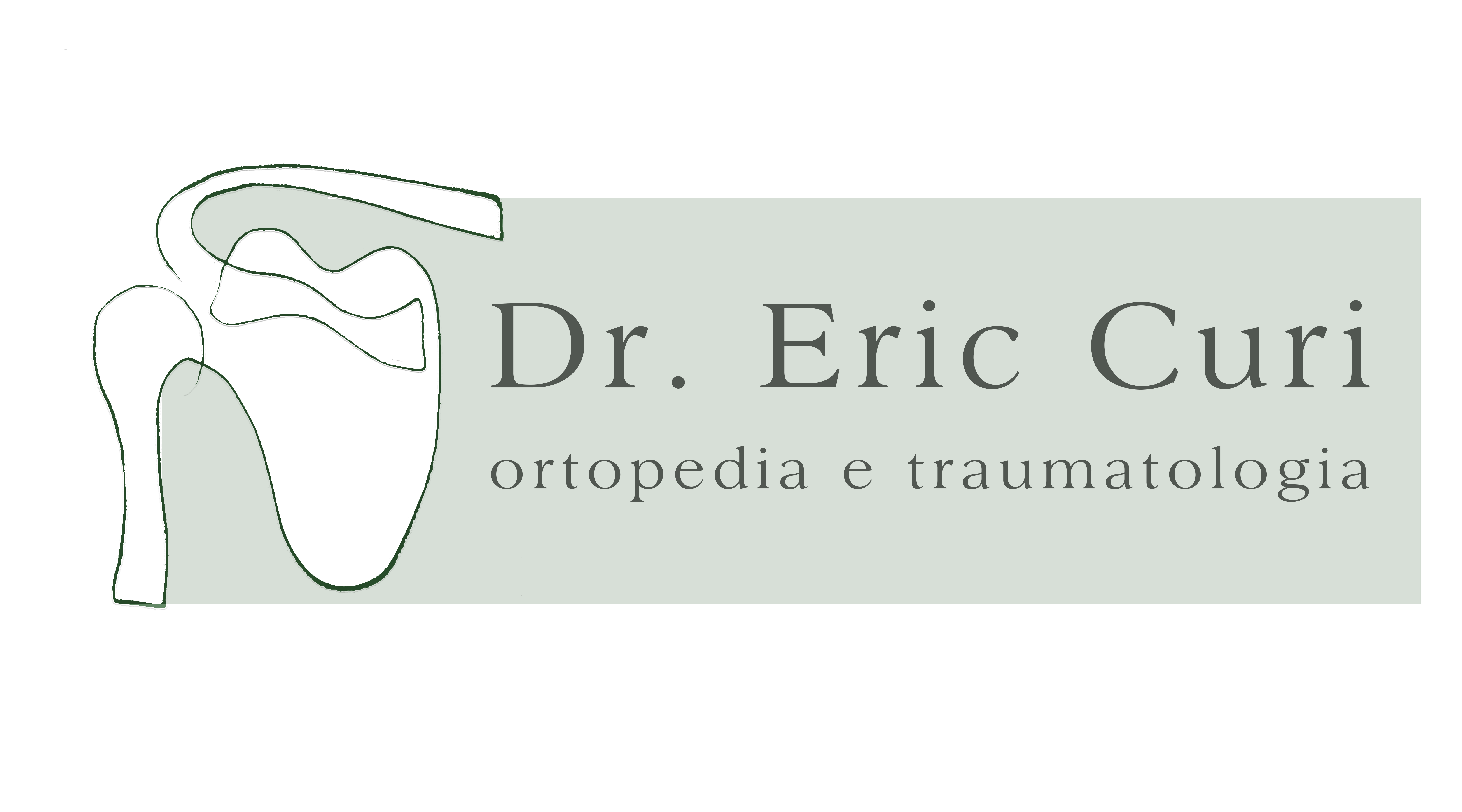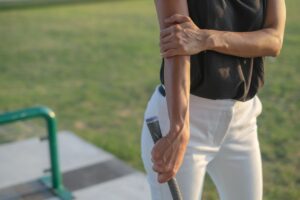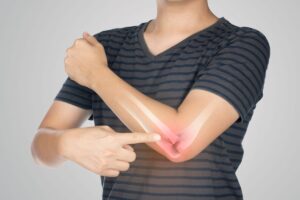Meet Dr. Eric Curi, Orthopedic Surgeon and Traumatologist, specialist in Shoulder and Elbow surgery in São Paulo.
Medial Epicondylitis | Golfer’s Elbow
Shoulder Pathologies
Elbow Pathologies
General Orthopedics
Last news
Medial epicondylitis, commonly known as “golfer’s elbow,” is a painful condition that affects the inner (medial) part of the elbow. It can significantly interfere with daily activities or sports performance.
Although it’s often associated with sports, this condition is not exclusive to athletes. In fact, most people who develop golfer’s elbow have never played golf in their lives. It can affect anyone who places repetitive stress on the elbow joint—whether through work, exercise, or daily tasks.
On this page, you’ll find helpful information about the causes, symptoms, diagnosis, and treatment options for medial epicondylitis.
What Is Medial Epicondylitis?
Medial epicondylitis is a specific type of tendinitis that affects the tendons connecting to the inner part of the humerus (the upper arm bone that forms part of the elbow joint). The pain originates in a bony area called the medial epicondyle, located on the inside of the elbow.
This condition occurs due to chronic inflammation and microtears in the tendons that originate from the medial epicondyle—mainly the pronator teres, flexor carpi radialis, flexor digitorum superficialis, and flexor carpi ulnaris muscles.
The result is pain, inflammation, and reduced tendon healing in the elbow area.
Medial epicondylitis is typically triggered by repetitive forearm motions—especially wrist flexion and rotation (pronation and supination)—common in activities such as:
- Repetitive arm movements at work or during sports
- Lifting heavy objects
- Poor technique during physical activity
Although frequently seen in athletes, this condition can affect anyone who overuses the elbow joint.

Common Symptoms
Signs and symptoms of golfer’s elbow may include:
- Pain on the inner side of the elbow
- Pain that may radiate to the forearm or fingers
- Weakness or difficulty when gripping or lifting objects
- Decreased elbow strength and stiffness, making daily tasks harder
These symptoms can significantly affect a person’s quality of life, and targeted treatment is often necessary for full recovery.
Diagnosis and Treatment
Diagnosis is usually made during a physical examination in the office, where specific movement tests help confirm the condition. While diagnosis is primarily clinical, imaging tests such as ultrasound or MRI may also be used in certain cases.
Treatment depends on how advanced the condition is. Fortunately, most cases respond well to non-surgical treatment, including:
- Avoiding activities that worsen the pain
- A period of rest to allow the tendons to heal
- Wearing braces or supports for the elbow or wrist
- Physical therapy, starting with anti-inflammatory techniques and progressing to stretching and strengthening exercises to restore function and prevent future injuries
In more severe cases, regenerative medicine treatments may be considered, such as:
- Hyaluronic acid injections
- Platelet-rich plasma (PRP) therapy
- Bone marrow aspirate injections
When Is Surgery Necessary?
Surgery is rarely required, but it may be considered if symptoms persist for several months or even years despite conservative treatment.
When needed, the procedure is usually performed through a small 3 cm incision. This minimally invasive approach allows for removal of damaged tissue and repair of the tendons.
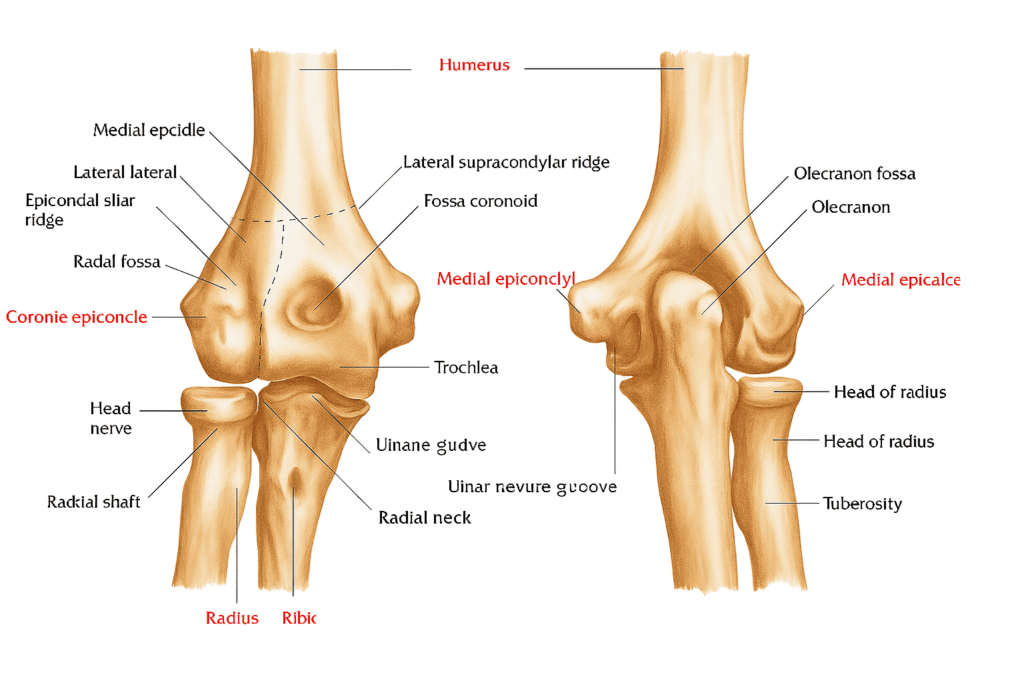
There Is a Solution
Medial epicondylitis can be painful and frustrating—but it is treatable. With the right diagnosis and a personalized treatment plan, most patients can significantly reduce their symptoms and restore elbow function.
If you’re experiencing persistent elbow pain, schedule a consultation with Dr. Eric Curi for expert care and a treatment approach tailored to your needs. Regain your mobility, comfort, and quality of life in São Paulo.
Schedule your appointment with Dr. Eric Curi
Vila Olímpia
SARTOR - Medicina Integrada
- (11) 3045-2090
- Rua Helena, 218 - Trade Tower - 4º Andar
- Segunda - Sexta : 09:00 -18:00
